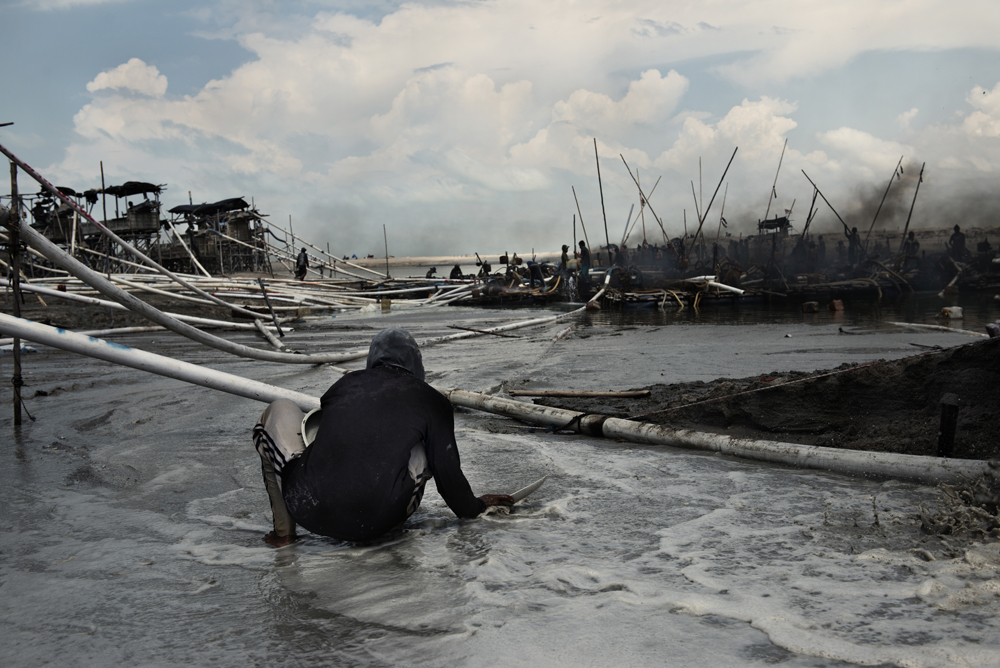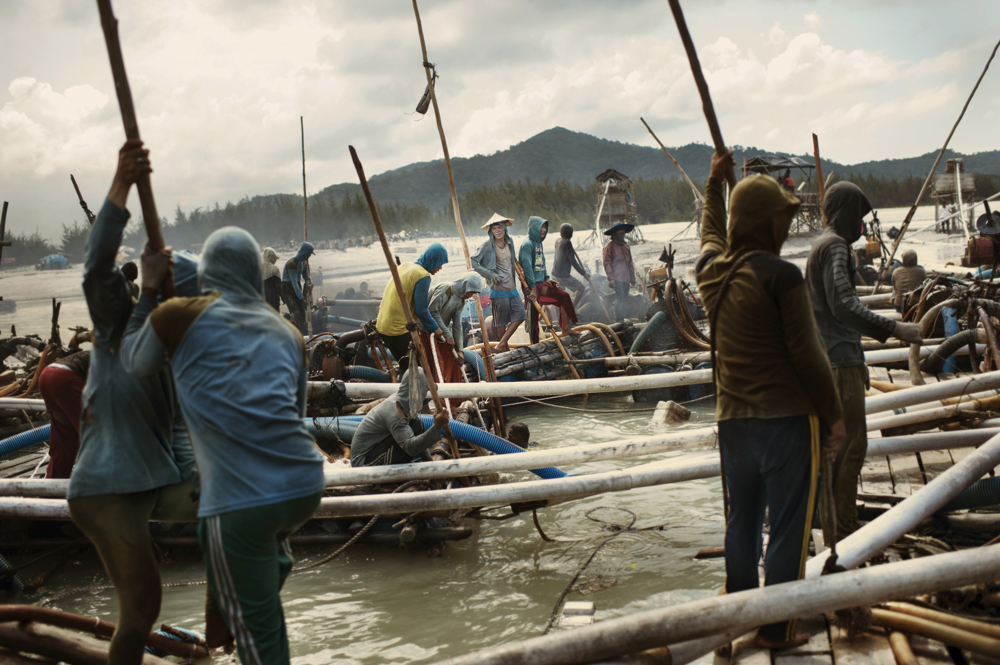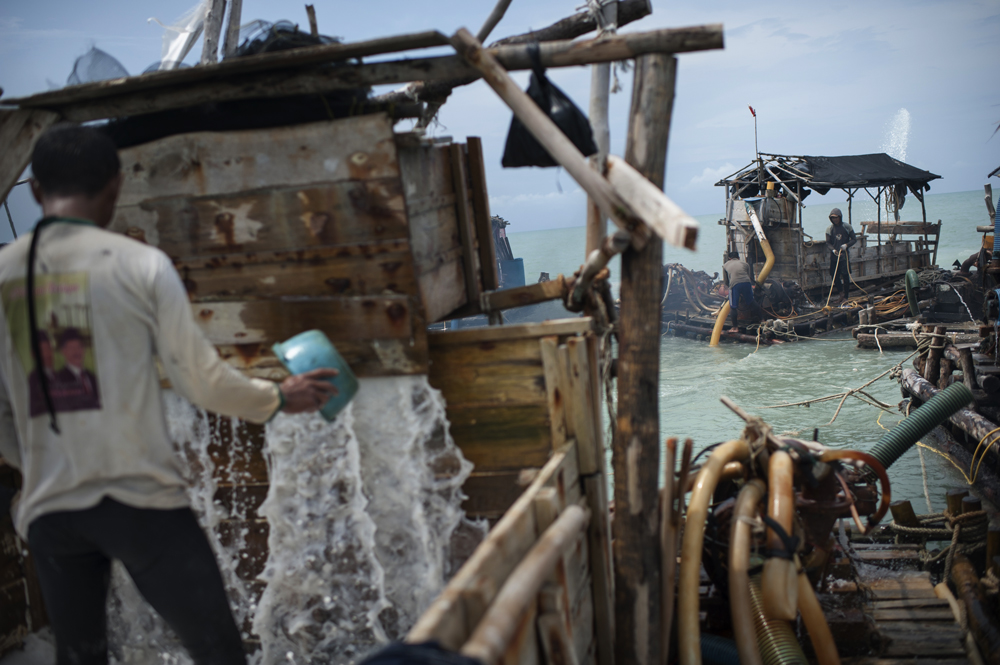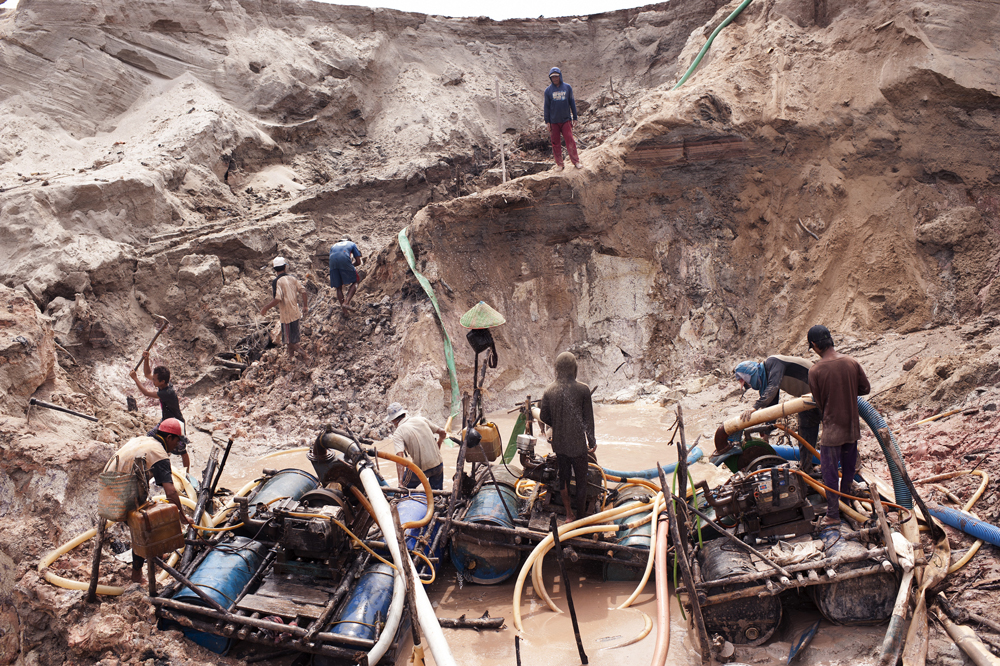Death Metals - Mining for the first world
-
PhotographerKai Loeffelbein, Germany
-
Studiokai löffelbein
-
Website
Years of intensive tin mining has left a trail of devastating effects on the environment
and the people on Bangka island. Big tin companies such as PT Timah and informal miners
destroy large tracks of forest and the offshore mining the coral reefs. Bangka island
produces currently one third of world's tin, used widely in the electronics and IT
industry by major brands.
According to government figures 44,202 metric tons of tin was mined in 2012. But
regulation is weak and many mines are illegal and in some cases even employing children.
Informal miners sell their day's findings on to middlemen, who also collect tin from
miners working in official mines. On Bangka Island 20% of locals are tin miners and
another 40% work in related industries. There are mines in backyards, mines in the forest,
mines on the side of the road, mines out at sea. Since national and international media
has brought some attention to the dangerous tin mining procedure police is forced to stop
the illegal tin mining. But police-corruption is high and many families earn a lot of
money with tin. Bangka has more or less turned into one big mining pit. Off shore tin
mining is also rampant. Suction ships and bucket dredgers are killing marine life and
destroying coral reefs. Bangka used to be a beautiful island with white sand beaches, palm
trees, coral reefs and everything which belongs to the cliché of a tropical island. But
its beauty is nearly destroyed.
Kai Löffelbein, is a young freelance photographer from Germany (born 1981). After he studied political science in Berlin, he began his studies of â??Photojournalism and Documentary Photographyâ?? in 2008 at the University of Applied Sciences and Arts in Hannover. Since 2007, he has been working as a freelance photographer for different NGOs and several German newspapers.
Kai Löffelbein traveled through various countries in South America, Asia and Eastern Europe. In doing so, the art of photography provided him with insights into completely different ways of life and living conditions. Meeting people who have to fight for survival on a daily basis raised his desire to grab his viewersâ?? attention and make them take action. His images furthermore show the effects of socio-political and economic processes on common people.
Kai Löffelbein feels committed to Concerned Photography. â??My images always take sides. Their aim is not only to draw peopleâ??s attention to various social grievances but also to make us realize our own responsibility in a globalized worldâ??, says the photographer.
â??My aim is to treat people with respect and the utmost empathy without displaying poverty and suffering for the purpose of sensationalism. The human being in all its complexity is always at the heart of my work.â?? His photos were exhibited, for example, in Brussels, London and Moscow as well as several times in Germany.
Awards Magnum Emergency Fund grantee
Finalist – Foto Visura Grant
Head on photo – 2nd place multimedia
1st Prize – Henri Nannen
3rd Prize – 8th DAYS JAPAN International Awards
Critical Mass, Top 50 Selected Artist
1st Prize – Unicef photo of the year award




